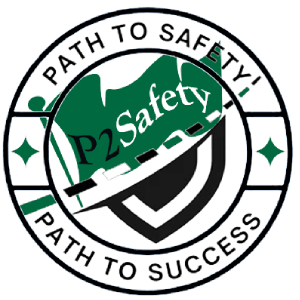CRST 25 Flashcards

1. Workplace Inspections
Workplace inspections to identify health and safety hazards in the work place. to develop health and safety standards and procedures. to establish preventive controls. to monitor the effectiveness of controls. Here are some of the ways inspections can take place. Safety tours - general inspections of the workplace. Safety sampling - systematic sampling of particular dangerous activities, processes or areas. Safety surveys - general inspections of particular dangerous activities, processes or areas.

2. Incident Investigations
An incident investigation is the account and analysis of an incident based on information gathered by a thorough examination of all contributing factors and causes involved. It is widely accepted that incidents occur as a result of a chain of events.

3. Elements of an Incident Investigation
Elements of an incident investigation include: preparation, on-site investigation and development of a report, with recommendations for prevention. Provide training to investigators, including management, workers, safety committee members and union representatives.

4. Statistics Mean
In statistics, the mean is one of the measures of central tendency, apart from the mode and median. Mean is nothing but the average of the given set of values. It denotes the equal distribution of values for a given data set. The mean, median and mode are the three commonly used measures of central tendency.

5. Percentages
One of the most frequent ways to represent statistics is by percentage. Percent simply means "per hundred" and the symbol used to express percentage is %. One percent (or 1%) is one hundredth of the total or whole and is therefore calculated by dividing the total or whole number by 100.

6. A Standard Deviation (or σ)
A standard deviation (or σ) is a measure of how dispersed the data is in relation to the mean. Low standard deviation means data are clustered around the mean, and high standard deviation indicates data are more spread out.

7. Time Weighted Average
A time-weighted average is equal to the sum of the portion of each time period (as a decimal, such as 0.25 hour) multiplied by the levels of the substance or agent during the time period divided by the hours in the workday (usually 8 hours).

8. What Is the Mode?
The mode is the value that appears most frequently in a data set. A set of data may have one mode, more than one mode, or no mode at all. Other popular measures of central tendency include the mean, or the average of a set, and the median, the middle value in a set.

9. A Job Safety Analysis (JSA)
A job safety analysis (JSA) is a procedure which helps integrate accepted safety and health principles and practices into a particular task or job operation. In a JSA, each basic step of the job is to identify potential hazards and to recommend the safest way to do the job.

10. Task Analyses
Task analysis is a fundamental tool of human factors engineering. It entails analyzing how a task is accomplished, including a detailed description of both manual and mental activities, task and element durations, task frequency, task allocation, task complexity, environmental conditions, necessary clothing and equipment, and any other unique factors involved in or required for one or more people to perform a given task.

11. A Process Flow Analyses.
A process flow is a way to visualize each subsequent step that your team goes through when working toward a goal. By visualizing these steps in a diagram or flowchart, everyone can easily understand what order they have to complete tasks. Improving processes is critical for getting higher-impact work done, faster.

12. What is the meaning of safety in design?
Safety in Design is a process that integrates hazard identification and risk assessment methods early in the design. The process considers how to eliminate, isolate or minimize the risks of death, injury and ill health to those who construct, operate, maintain, decommission or demolish an asset. Safe design applies to every stage in the life cycle from conception through to disposal. It involves eliminating hazards or minimizing risks as early in the life cycle as possible. The consistent application of hazard identification, risk assessment and risk control processes is required to achieve safe design.

13. WHMIS
The Workplace Hazardous Materials Information System (WHMIS) is Canada's national hazard communication standard. The key elements of the system are hazard classification, cautionary labelling of containers, the provision of safety data sheets (SDSs) and worker education and training programs.

14. GHS
Globally Harmonized System (GHS) for Classification and Labeling of Chemicals. The Globally Harmonized System (GHS) is an international approach to hazard communication, providing agreed criteria for classification of chemical hazards, and a standardized approach to label elements and safety data sheets.

15. Point of operations
The point of operation is where work is performed on the material, such as cutting, shaping, boring, or forming of stock. The power transmission apparatus is all components of the mechanical system which transmit energy to the part of the machine performing the work. Point of operations means that point at which cutting, shaping, boring, or forming is accomplished upon the stock. The power transmission device refers to all parts of a mechanical system that transmit energy to the part of the machine performing the work. That's the point of operation, which is where work is performed on the material, such as shaping, cutting, boring, drilling, etc.

16. What does a light curtain do?
The simplest function of a light curtain is when light beams are obstructed and the outputs turn off, which signals a stop to the associated hazardous movement(s). If no incident has occurred and the area is safe, a reset can be performed.

17. An interlock
An interlock is a feature that makes the state of two mechanisms or functions mutually dependent. It may be used to prevent undesired states in a finite-state machine, and may consist of any electrical, electronic, or mechanical devices or systems

18. Personal protective equipment.
Personal protective equipment is protective clothing, helmets, goggles, or other garments or equipment designed to protect the wearer's body from injury or infection. The hazards addressed by protective equipment include physical, electrical, heat, chemicals, biohazards, and airborne particulate matter.

19. What is bonding?
Bonding is used to reduce the risk of electric shocks to anyone who may touch two separate metal parts when there is a fault somewhere in the supply of electrical installation. By connecting bonding conductors between particular parts, it reduces the voltage there might have been.

20. Electrical grounding
Electrical grounding is the process of directing excess electricity to the ground via a wire. Known as a grounding wire, it's an essential safety component in most electrical systems. The grounding wire will discharge excess electricity safely to the ground so that it doesn't cause injuries or fires.

21. Electrical circuit-interrupters
Electrical circuit-interrupters, such as AFCI's (arc-fault circuit-interrupters) and GFCI's (ground-fault circuit-interrupters), are devices required by the National Electrical Code® (NEC®) that are designed specifically to help prevent fires and electric shock.

22. Material handling
Material handling is the movement, protection, storage and control of materials and products throughout manufacturing, warehousing, distribution, consumption and disposal.

23. Lockout tagout (LOTO)
Lockout tagout is the de-energizing and securing of equipment, machinery or processes so hazardous energy isn't re-introduced during servicing or repair. This includes closing electrical circuits and valves, neutralizing extreme temperatures, securing moving parts and more.

24. Electrical hazards
The main hazards of working with electricity are: electric shock and burns from contact with live parts. injury from exposure to arcing, fire from faulty electrical equipment or installations.

25. Computer control systems
A control system is a type of computer system that manages, commands and directs other devices or systems. There are open and closed loop control systems. They usually take an input, process it and get an output.




